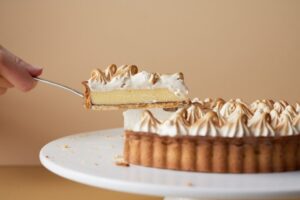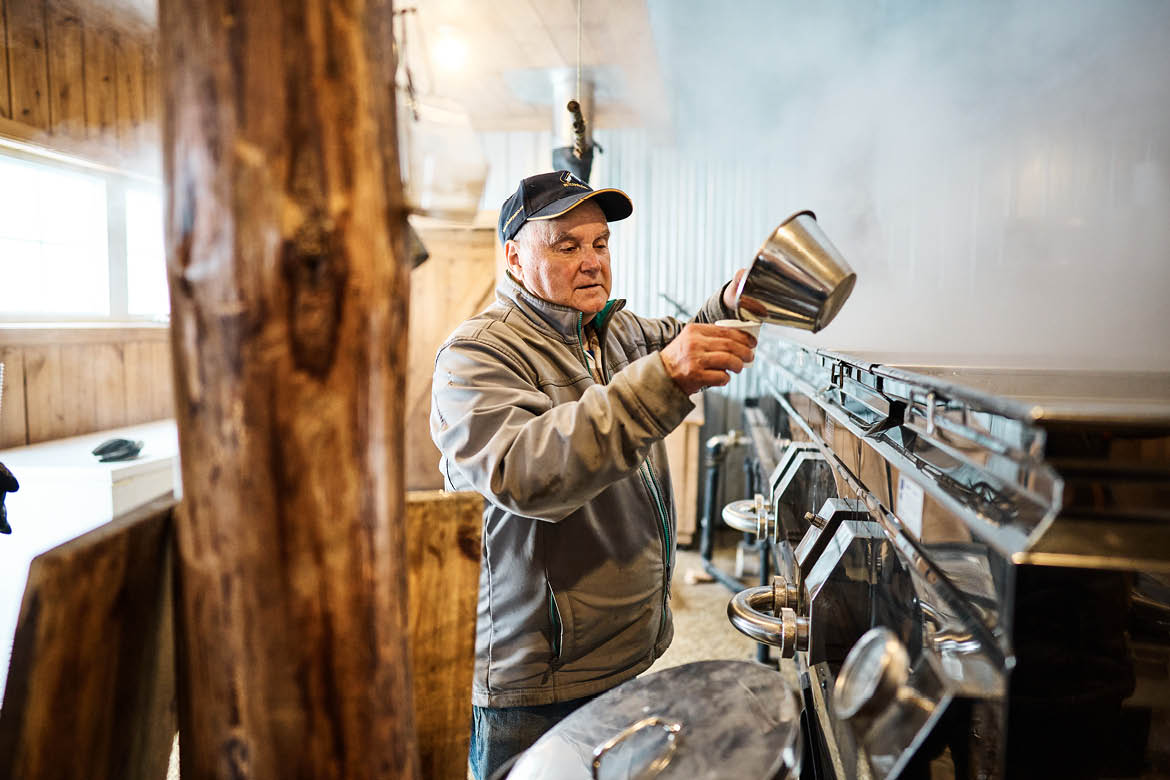Sponsored content
Maple syrup is fast becoming a staple in pantries across Australia, with bakers looking for a natural alternative to refined sugar that is suitable for a range of specialist diets and consumer habits.
From classic bakes to intricate pâtisserie, pure Canadian maple syrup adds an extra dimension of flavour and Australian bakers, chefs and consumers can’t get enough, with export figures revealing that over 2.8 million kilograms were imported from Canada in 2022.
The Canadian province of Quebec is home to more than 13,300 maple producers, who harvest over 72 per cent of the world’s supply each year. During the spring, a unique natural freeze/thaw phenomenon creates the perfect conditions for the sugary sap to be harvested from over 34 million maple trees.
This harvest or “tapping season” typically runs over a limited period of 12-20 days from early March to late April, when the spring-time temperature fluctuations create pressure inside the trees, allowing the sap to be collected from the trunks.
The producers take the maple sap and boil it down in sugar shacks where it turns into the maple syrup we know and love.
It takes 40 litres of maple sap to produce 1 litre of maple syrup. That’s it. One ingredient with endless possibilities.
The resulting product is 100 per cent natural and pure and should not be confused with “maple flavoured” or golden syrups that contain preservatives, added sugar and artificial colourings.

Introducing speciality maple products
Maple sap’s versatility extends beyond syrup. In Canada the sap is turned into a wide range of delicious products that are being slowly introduced onto Australia’s shelves, as consumers and professionals search for new and exciting products and flavours to try.
Maple sugar is used by chefs, bakers and chocolatiers as a natural alternative to refined sugars and can be used as a gram-for-gram alternative, making recipe development a breeze.
To create the sugar, maple syrup is boiled down until the liquid evaporates, then left to cool and filtrated to create crystals. These crystals are then ground into a range of granularities, from the fine texture of icing sugar to coarser sugars like demerara. A fine maple sugar, similar to caster sugar, can be purchased in some speciality stores in Australia.
Another speciality product that can be bought in Australia is maple spread – a buttery-textured spread produced through skilfully cooking, cooling and stirring maple sap. Technically a fondant, the spread doesn’t contain butter or dairy, making it suitable for vegans and an ideal alternative for buttercream and frosting.
A future trend to look out for is the use of maple flakes. Maple flakes are made by freeze-drying maple syrup and have a distinctive crunch and melt in the mouth texture when consumed. They are an excellent choice for pâtissiers and bakers, adding texture to goods and a punch of flavour that is unique and delicious.
Perfect for specialist diets
The bakery business landscape is constantly evolving with professionals testing new ingredients and products to cater for consumers who are trying new diets and health-conscious lifestyles, but still look for the occasional sweet treat.
As all maple products are derived from 100 per cent maple sap, there are no artificial ingredients or additives included, so baked goods are also suitable for specialist diets such as vegan and vegetarian, coeliac and gluten-free and FODMAP.
In early 2023 Canadian scientists carried out a landmark study on behalf of Maple from Canada, looking into the effects of replacing small amounts of refined sugar or sweeteners with an equivalent quantity of maple syrup in an adult’s diet.
Analysis of the trial found that switching to maple syrup reduced cardiometabolic factors by decreasing abdominal fat and systolic blood pressure while also improving glycaemic responses in glucose tolerance tests – essentially making new healthy habits could reduce chances of cardiometabolic diseases such as diabetes, heart attacks or stroke.
Recipe

Maple Lemon Meringue Tart
Ingredients
For the pastry
150g unsalted butter, cut into small cubes
180g maple sugar
2 eggs
zest of ½ a lemon
¼ tsp baking powder
375g plain flour, plus extra for dusting
For the lemon filling
200ml lemon juice
150g maple sugar
4 eggs
200g unsalted butter
For the meringue
3 egg whites
180g maple sugar
Equipment
You will also need a loose-bottom, fluted flan tin and some baking beans.
Method
Pastry:
In a food processor, pulse the butter and maple sugar until smooth. Add the eggs and mix on low speed.
Once smooth, add the flour, baking powder and lemon zest, mixing util a dough forms. Wrap the dough in cling film and refrigerate for 2 hours.
Roll out the pastry on a floured surface large enough to cover the tin. Press pastry into the tin’s folds, ensuring cracks are covered. Chill for 1 hour.
Preheat oven to 180°C and place a baking sheet inside.
Line the chilled pastry with greaseproof paper, fill with baking beans and bake for 15 mins. Remove from the oven and take out the beans and paper.
Lemon filling:
In a pan, combine the egg, lemon juice and maple sugar. Bring to a boil.
Gradually add the butter, mixing continuously, then pour the curd into the tart case.
Chill the tart for 2-3 hours until the curd sets.
Meringue:
Whisk the egg whites in a clean, dry bowl until soft peaks form. Gradually add the maple sugar, whisking until stiff peaks form.
Assembly:
Remove tart from the fridge. Spoon the meringue into a piping bag with a 1½cm nozzle. Pipe even blobs over the chilled curd in a neat pattern.
Gently toast the meringue with a blowtorch or place under the grill until lightly browned.
For more information contact Maple from Canada.




COMMENTS